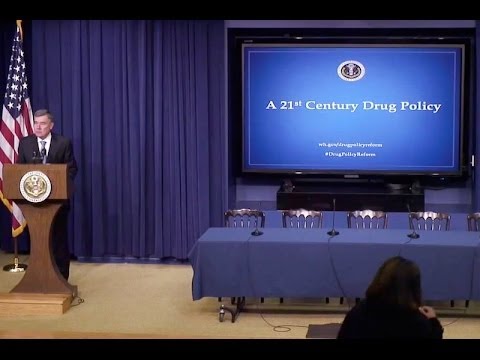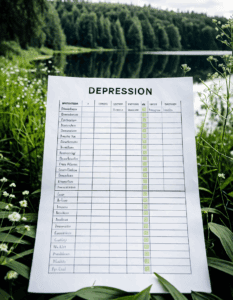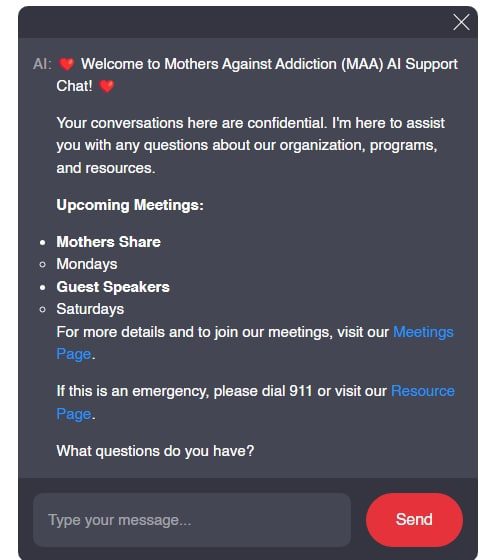2021 was a landmark year for drug policy reform in the United States. Amidst the opioid crisis and rising substance abuse issues, the Drug Policy Reform Act of 2021 (DPRA) was enacted. This legislation fundamentally shifted the nation’s approach to drug addiction, moving from punitive measures to a rehabilitative focus, prioritizing public health and safety. Spearheaded by progressive lawmakers and supported by diverse coalitions, the DPRA marked a turning point in the nation’s battle against substance misuse.
The Genesis of the Drug Policy Reform Act of 2021
The Drug Policy Reform Act of 2021 emerged as a response to the escalating opioid crisis and the failure of previous punitive approaches to curb substance abuse. Rather than criminalize drug addiction, DPRA advocates for comprehensive rehabilitation and public health strategies. Backed by a coalition of healthcare professionals, human rights activists, and policy reform advocates, the DPRA sought to reduce the stigma around addiction and ensure that individuals receive the help they need.
The Role of Advocacy Groups in Shaping DPRA
Advocacy groups played a pivotal role in the creation of the DPRA. Organizations like the Drug Policy Alliance, Families for Sensible Drug Policy, and our very own Mothers Against Addiction used relentless lobbying and public awareness campaigns to influence lawmakers. By sharing personal stories of families devastated by addiction, they highlighted the importance of shifting focus from punishment to compassion and support.
Real Stories, Real Impact
Mothers Against Addiction has been on the front lines, helping parents like Lisa Thompson, who lost her son to an overdose, and John Williams, whose daughter struggles with substance abuse. Their stories, shared through our platforms and campaigns, have illustrated the urgent need for change. When advocacy intersects with activism, the results are powerful, achieving life-saving reforms.
| Aspect | Details |
|---|---|
| Act Name | Drug Policy Reform Act of 2021 (DPR Act of 2021) |
| Regulatory Authority Transfer | Transfers federal regulatory authority over controlled substances |
| Elimination of Penalties | Eliminates federal penalties for some drug-related offenses |
| Collateral Consequences Removal | Removes some collateral consequences for certain criminal convictions |
| Harm Reduction Policies | – Needle syringe programs |
| – Drug substitution programs | |
| – Free facilities for testing drug purity | |
| Jurisdictional Variations | The definition of “drugs” varies by jurisdiction |
| Regulatory System Change | Replaces individual NDA approach with monographs on “drug entities” and “drug product” licenses |
| Investigational Process | Redefines and amplifies to facilitate and promote research while protecting patients’ rights |
| Current Federal Law | Prohibits possession, use, or distribution of illicit drugs; strict penalties including mandatory prison terms |
| Increased Penalties | Penalties increase if drug use results in death or serious bodily injury |
| Program Goals | – Reduce illicit drug use, manufacturing, and trafficking |
| – Reduce drug-related crime and violence | |
| – Reduce drug-related health consequences | |
| National Strategy | Director of ONDCP produces the National Drug Control Strategy |
Key Provisions of the Drug Policy Reform Act of 2021
The DPRA introduced several transformative strategies to address drug addiction’s multifaceted challenges:
A Comparative Analysis of Global Drug Policies
It’s essential to compare the DPRA with global benchmarks. Portugal, for instance, decriminalized all drugs in 2001 and adopted a public health framework. This shift led to reductions in overdose deaths, HIV infection rates, and drug-related crime. Similarly, Canada’s harm reduction policies, like the supervised injection site in Vancouver, have shown significant public health benefits.
In contrast, the United States had long employed punitive measures, resulting in high incarceration rates and limited impact on addiction rates. Learning from these progressive models, the DPRA sought to redirect efforts towards evidence-based, compassionate care.
Data-Driven Outcomes: A Three-Year Retrospective
Three years post-enactment, the DPRA has yielded impressive results:
Real Stories
Beyond statistics, countless personal narratives reflect the DPRA’s impact. Take Samantha Harris, who battled opioid addiction for over a decade. After the DPRA, she accessed a community-based MAT program and intensive counseling. Today, Samantha is in recovery and serves as a peer counselor, helping others on their journey. Another example is Anthony Rodriguez, who participated in a restorative justice program instead of facing prison for a minor offense. He now contributes to his community through service and has rebuilt his life free from the cycle of crime.
Innovating Towards a Supportive Future
As we look to the future, the journey towards comprehensive drug policy reform continues. The DPRA was a substantial step, but ongoing refinement and commitment are crucial. Policymakers, advocacy groups, healthcare providers, and communities must work together to ensure continued progress.
By emphasizing empathy, evidence-based practices, and human dignity, we can foster a society where recovery support is a right, not a privilege. As we move forward, our vision remains clear: to turn the tide against addiction and its devastating impacts, creating a more compassionate and effective system for all.
At Mothers Against Addiction, we stand ready to support parents through this challenging journey. Whether you’re dealing with a child’s addiction or mourning a loss, know that you’re not alone. Our resources, including guides on Overcoming guilt And shame and harm reduction Policies, are here to help. For more detailed information on government efforts and policies, visit Government And Policy.
The Drug Policy Reform Act of 2021 has set a new course—one where compassion, respect, and scientific evidence lead the way. Together, let’s continue to champion this path and ensure every individual struggling with addiction finds the support and dignity they deserve.
Drug Policy Reform: Fascinating Facts and Insights
The Spark of Change
Did you know that the Drug Policy Reform Act of 2021 could be a game-changer for many communities? This reform not only emphasizes harm reduction but also seeks to decriminalize certain substances. As pointed out by experts, this approach tries to minimize stigma, offering those struggling with addiction better support and resources. Alongside this, the reform encourages finding engaging ways to spread awareness. Imagine a keynote speaker For hire who can passionately discuss the significance of drug policy reform, captivating audiences at conferences and community events alike.
Unanticipated Impacts
Interestingly, reforms in drug policies could have ripple effects far beyond addiction treatment. For instance, some advocates argue that better policies might reduce crime rates, indirectly lessening incidents like the baltimore shooting. With law enforcement focusing on serious crimes instead of minor drug offenses, communities could experience a drop in violence. And, let’s not overlook the financial aspect—by reallocating funds from strict policing to supportive services, there’s potential for budget savings that benefit society as a whole.
A Closer Look at Economics
Speaking of finances, did you also know that drug policy reform could impact the housing market? Lower crime rates and improved neighborhood safety might make areas more desirable, thereby influencing property values and the average mortgage rate. A safer and more supportive community environment often translates into economic growth, enhancing overall quality of life. So, next time you’re discussing mortgage rates, it might be worth considering how broad social policies, like drug reform, play a role.
Pop Culture and Perception
Lastly, pop culture can greatly shape public perception. Case in point is the story involving Deandre Hopkins combine hotel room,( a tale that reminds us of how personal lives and media sensationalism intersect. Similarly, public discourse around drug policy reform can benefit from nuanced, thoughtful discussions rather than sensationalized headlines. This aids in shifting societal attitudes, fostering a more empathetic and informed perspective on addiction and recovery.
Controversial Discussions
Sometimes, even seemingly unrelated news can impact public opinion on drug policies. For example, stories like Kay Hansen nude( controversies might capture attention and drive conversations about privacy, consent, and social ethics. Similarly, engaging debates around drug reform help shape a more balanced view, promoting policies rooted in empathy and effectiveness rather than fear and misinformation.
In essence, the Drug Policy Reform Act of 2021 isn’t just a policy tweak—it’s a comprehensive effort aimed at fostering safer, healthier, and more resilient communities. By examining these various facets and interesting tidbits, we gain a deeper appreciation for why drug policy reform matters and how it can profoundly affect various aspects of our lives.

What is one example of a drug policy?
An example of a drug policy could be the Drug Policy Reform Act of 2021. This act transfers federal regulatory authority over controlled substances, eliminates federal penalties for some drug-related offenses, and removes certain collateral consequences for specific criminal convictions.
What is the drug Regulation Reform Act?
The Drug Regulation Reform Act of 2021 eliminates the individual NDA approach and replaces it with a new system of monographs on “drug entities” and “drug product” licenses, redefining the investigational process to facilitate research and protect patient rights.
What is the current drug policy in the United States?
Current drug policy in the United States prohibits the possession, use, or distribution of illicit drugs under federal law, with strict penalties, including mandatory prison terms, especially if drug misuse results in death or serious injury.
What does the drug control policy do?
Drug control policies aim to reduce illicit drug use, manufacturing, trafficking, related crime and violence, and health consequences. The Director of the ONDCP is responsible for producing the National Drug Control Strategy to achieve these goals.
What is the drug policy reform organization?
Drug policy reform organizations work to change existing drug policies to be more just and effective. They often advocate for harm reduction methods, like needle syringe programs and drug substitution programs.
What is the act drug policy?
The Drug Policy Reform Act of 2021 updates how controlled substances are regulated federally, reduces some drug-related penalties, and promotes research while protecting patients’ rights.
What is the drug law Reform Act of 2004?
The Drug Law Reform Act of 2004 aimed to address mandatory minimum sentences and other punitive measures in the criminal justice system, although it has since been surpassed by newer legislation.
What is the Drug Abuse Control Amendment Act?
The Drug Abuse Control Amendment Act established a regulatory framework for substances that can lead to abuse, marking one of the early federal efforts to control the distribution of potentially dangerous drugs.
What is prescription drug reform?
Prescription drug reform generally refers to changes in regulations to make prescription medications safer and more accessible while preventing abuse and fraud within the healthcare system.
What is the most favored nation drug policy?
The most favored nation drug policy ties the prices the U.S. government pays for certain prescription drugs to the lowest price that other developed nations pay, attempting to lower medication costs.
What are the PROs of drug policy?
Pros of drug policy can include reduced health risks through harm reduction programs, decreased crime rates, and lower incarceration rates, as well as better support and treatment for those with addiction issues.
What is the ATF drug policy?
The ATF drug policy enforces federal laws related to the illegal trafficking and misuse of alcohol, tobacco, firearms, and explosives, which includes provisions for handling illicit drug activities.
What is the three part approach to the drug policy of the United States?
The three-part approach to drug policy in the United States includes prevention of drug abuse, treatment for those with substance use disorders, and enforcement against drug trafficking and distribution.
Are drug laws state or federal?
Drug laws can be both state and federal. While federal laws provide the baseline regulation, states can have their statutes addressing the misuse of controlled substances.
What is the federal drug control program?
The federal drug control program, managed by the ONDCP, aims to create and implement strategies to reduce drug use, improve public health, and lessen the damages caused by drug-related crimes.
What is an example of a drug free workplace policy?
A drug-free workplace policy typically involves measures like random drug testing, educational programs on substance abuse, and sanctions or support systems for employees found to be using illegal substances.
How to write a drug policy?
When writing a drug policy, it’s essential to outline the acceptable and prohibited behaviors regarding substance use, include procedures for testing and enforcement, and detail support mechanisms for those seeking help with addiction.
What is a drug handling policy?
A drug handling policy typically covers how controlled substances are stored, accessed, and administered, ensuring compliance with regulatory standards to prevent misuse and ensure safety.
What is a substance abuse policy?
A substance abuse policy outlines expectations regarding the use of drugs and alcohol within an organization, procedures for addressing substance misuse, and resources available for support and treatment.




























